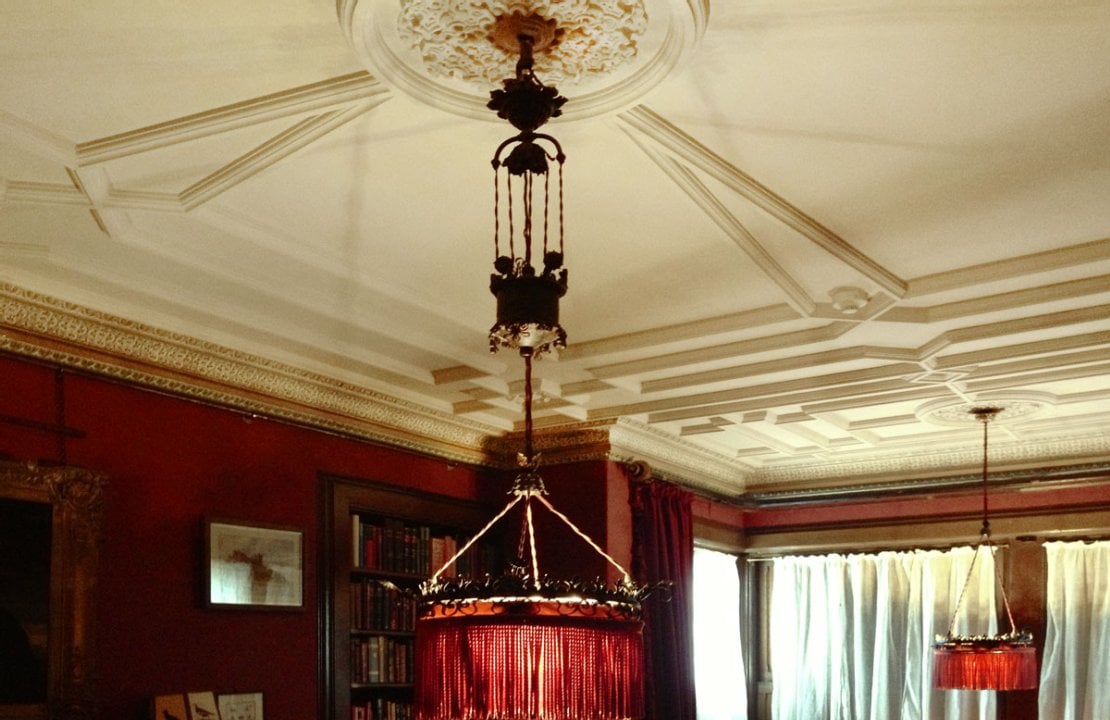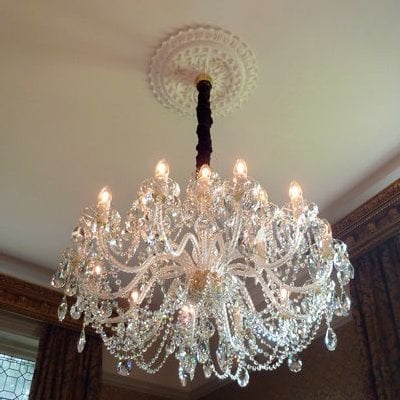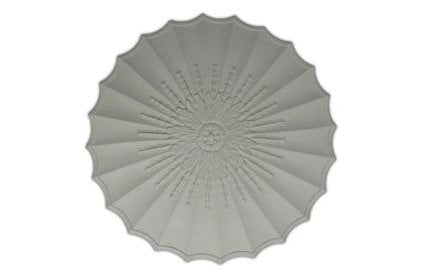The Victorian Emporium's Ceiling Rose Style 30 and large bohemian chandelier.
What material is the best choice for a ceiling rose?
If you have a period house it is a relatively cheap but highly aesthetic move to add a plaster ceiling rose to ceilings of the main rooms. There are alternatives made of plastic and polystyrene but these are generally not considered to be good either in terms of taste or the integrity of the house. Plaster ceiling roses are not expensive and will last for a very long time as long as the ceiling has no major traumas such as a bath overflowing above it. The benefits of a ceiling rose are that it frames the connection and makes a feature of the light. It will add glamour and make a room look dressed and of it's historic period. If a ceiling rose has been damaged beyond repair it is easy just to remove it, plaster the ceiling and glue the new ceiling rose in it's place. The new ceiling rose might need to be propped up while the glue sets.
The Victorian Emporium's Ceiling Rose Style 36
Ceiling roses come in many different styles from the simple to the ornate, with leaves, flowers, fluted etc. When choosing a ceiling rose, make sure you choose one at the size and in proportion to the room – a small size in a hallway and a much larger size in a main reception room. When looking for something that may be close to what is original to your house, look for any ceiling roses that remain in your house or if not, in your neighbour’s house to see what might be a local style to your area.
The Victorian Emporium sells the full range of beautiful Victorian plaster ceiling roses, coving and corbels for every room in your house.




Posted by Tim - Jun 19, 2015 - 04:35
Is it “correct” to paint them? I see some roses painted or gilded in period restorations, but typically not. Of course this is regional as well, but what was the Victorian attitude toward it?
Another problem with ceiling roses is that no one sells them by architectural style, although they are an architectural element. Most I see are what we’d call “Victorian” covered with acanthus leaves and to me overwrought in all but a palatial home. What might be appropriate for a modest neo-classical revival home (I am in the southern US)? I think the scalloped one pictured here is exquisite. I’m not quite interested in outright classical style with egg and dart or urns; something simpler. My turn of the (last) century home is small (1800 square feet) so I need to not get out of hand.